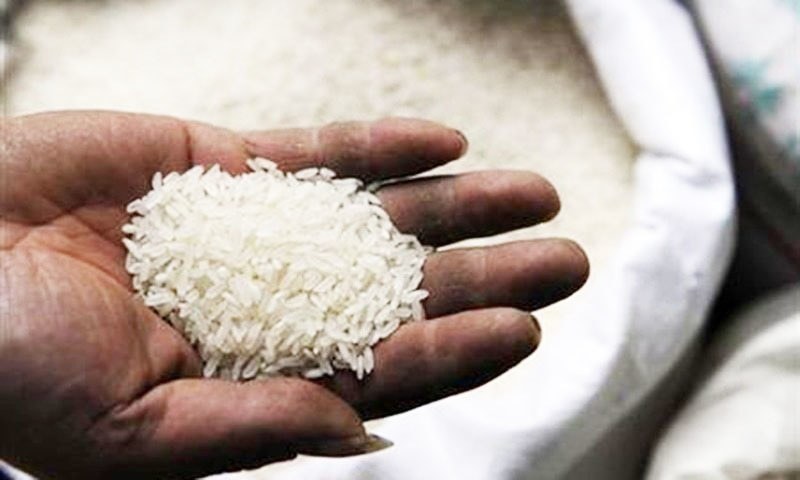THE sudden surge in rice price in Bangladesh has created tremendous uproar all over the country. It certainly has made it difficult for low-income urban families to make ends meet, and given an opportunity for many politicians to capitalise on this issue and blame the government for its failure in maintaining rice prices at pre-9/11 levels.
Almost all segments of our society give the impression that this situation is catastrophic for the country, and in many ways they are pressing the government to bring down prices one way or another.
However, we do not hear at all the views of our silent farmers and participants in the agriculture sector who are the greatest beneficiaries of the positive terms-of-trade gains in their favour. They also represent the agriculture sector, where most of our workforce is employed.
The ongoing debate on rice price needs to be cast more objectively, taking into account the macroeconomic as well as income distributional impacts arising from the massive shift in the price of rice.
Who are the gainers and losers of the rice price increase if it is not reversed?
Bangladeshi farmers produce about 28 million tons of food grains, which meet about 95 per cent of our domestic demand in a normal year. With rice prices rising by Tk. 10 per kilogram, or Tk 300 per maund of paddy, farmers are likely to generate Tk 23,000-28,000 crores (equivalent to 3.5-4 billion dollars) in additional income from the same level of production.
Although the farm families themselves would consume a significant part of the increased value addition, non-farm households would be paying a significant part of this to the farmers through higher rice prices. There is no question that the farm sector in Bangladesh has never seen such a boost through a massive income transfer of this magnitude in such a short period.
What would be the response of the farmers?
Food grain prices increased by about 50-60 percent in Bangladesh, and globally, in 2007. Farmers have never experienced a positive price shock of this magnitude in many decades, and with access to credit and knowledge about improved seeds and fertiliser, they are likely to respond strongly to this price signal. I am sure about the elasticity of food output to prices in Bangladesh. But even if we very conservatively assume that the supply response is very inelastic, and as low as 0.2-0.3, the supply response should be in the range of 10-12 percent.
In a normal year, such an output expansion would be sufficient for Bangladesh to achieve food self-sufficiency.
Why had Bangladesh failed to achieve self-sufficiency in food in the past?
In seeking our answer to this issue, we should probably look at the incentive structure, particularly the decline in the real price of rice over the last several decades and the increase in input prices, which further eroded the profit margins for the farmers. Real food prices were 4 times higher in 1975 at their historic peak (no wonder Bangladesh had a famine around that time) compared with the historic lows it reached during 1996-2001.
The fact that Bangladeshi farmers could meet the growing domestic consumption needs, and limit the import requirements at around 5 percent over several decades despite such a steady decline in the real food price and a steady decline in arable land, are remarkable achievements. This was possible due to productivity gains through expansion of irrigation, adoption of HYV rice and increased use of fertilisers at subsidised prices.
Bangladesh could have become a rice surplus country if successive governments did not allow real rice prices to fall by such an extent in order to keep food prices cheap for the urban masses. Bangladesh is certainly not alone in this respect.
Many developing countries in the world, for political reasons, have sheltered their people from food-price rises by encouraging a steady decline in real food prices, at the expense of farmers who are not politically well organised.
While farmers are gainers under the current circumstances, the urban poor are hard hit by the price surge, and the government has to alleviate their pains to prevent adverse political reactions. In particular, for the large number of urban poor, the government has to find ways to provide rice at a cheaper price or through increased dearness allowance for the public sector employees. Use of VGF cards and food for work programs on a much broader scale will help the landless and other vulnerable groups.
If the positive price shock for the farmers persists, one way to finance these additional budgetary costs would be to reduce or eliminate agricultural subsidies and use the resources saved for the purpose of financing government intervention programs.
Since the value of increased farm income amounts to something more than Tk. 20,000 crore, eliminating subsidies worth Tk.1,200-1,500 crore would not have an adverse impact on farmers’ incentive. It is worth noting that even the European Union has already suspended some of its incentives under its common agricultural policy, and many other governments are likely to follow.
The reversal in the fortune of our farmers through higher prices for their products will help reduce rural urban inequality gap to some extent, create more employment in the agriculture sector for the rural landless poor, reduce pressures for migration to the cities, and help achieve food self-sufficiency. The enthusiasm with which the farmers are planting boro crop is a testimony to this effect.
While there is strong welfare arguments for helping those who stand to lose, it should be done through income transfer programs (as described above), rather than artificially depressing food prices.
Suppressing food prices and thus hurting the farmers is not a good policy
Let the farmers earn what they deserve, and financially empower them to buy fertilisers in the open market at market prices, independent of the inefficient government distribution network. Farmers will be working more in their fields, instead of demonstrating for fertiliser in front of the UNO offices or by blocking the highways.







